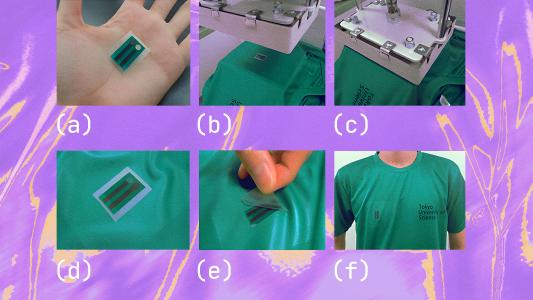Electric vehicles are becoming increasingly popular, with sales in 2021 representing 9% of all cars sold globally. That increase stems partly from governments incentivizing citizens to purchase electric vehicles to reduce carbon output: Norway plans to have all new car sales be zero-emission vehicles by 2025, with the UK and California following in 2035. Canada aims to end the sale of gas-powered cars in 2040.
Although the merits of these plans have sometimes been debated, they are accelerating the transition away from gasoline-powered vehicles. About 15% of greenhouse gas emissions in the US come from light-duty vehicles like passenger cars and trucks, while the broader transportation sector is the source of about 9% of all carbon emitted. And while lowering these numbers is a goal that most people can get behind, the shift from fossil-fuel-powered transportation systems toward something leaner, cleaner, and greener won’t happen through consumer sentiment alone. It will require people trained to make it happen.
But what will it look like when the people who fix electric cars are the typical mechanic rather than the exception? A body shop in California gives us a look at the shape of things to come.
Watch the full video on Zelectric:
The cleanest body shop you’ve ever seen
One of the places where the switch from internal combustion to electric motors is both a vision of the future and a reality for today is Zelectric Motors in San Diego. The body shop converts classic cars like mid-century Volkswagens and Porsches into EVs, combining the beauty of the original design with the environmental responsibility and cost efficiency of modern technology.
Zelectric’s shop floor looks more like a showroom than a traditional mechanic’s shed. This is no accident: EVs have fewer parts than gas-powered cars and don’t need nearly as many substances that might dirty your smock. As Trent Wonsley of Zelectric put it:
“Being an EV tech is a lot cleaner, you’re not dealing with as much grease, fluids, and fumes and all those things.”
Despite the lower number of parts — a Tesla drive train has 17 parts while gasoline-powered cars have more than 200 — EV parts can still be complicated. For example, a jolt from mishandling a Tesla battery can kill you, and breaking it can run you $20,000. The work Trent and his crew are doing is also so new that there isn’t much guidance for it. So, they had to learn it on the fly.
“When I got out of school and started doing this thing there was no handbook for learning EV,” Wonsley said. “Every single car that we do, we try to make steps so that the next one is easier, quicker to assemble, less wiring, more simple. We’re getting closer to where it’s successful for everyone.”
While not everyone who wants an electric car will want to convert a classic gas-guzzler — or even their more mundane rides — into an EV, Zelectric’s existence shows that there is a real need for technicians that understand electric cars inside and out.
Trent suggests that an EV technician can expect to earn a salary of about $75,000. This is above the median mechanic salary in the US of just under $60,000, but it’s within the expected income range for many working in that field.
The problems of shifting to EVs in ten years and how to solve them
The plan to rapidly shift over to EVs doesn’t come without speed bumps. Among them: Trent and his crew are not members of an overstaffed field.
“We need more people, more workforce to kind of attack all the demand,” Wonsley said. “You can always take your car to a dealer, but people are going to want competitive rates. So that’s where it’ll be a serious industry.”
While there is a general shortage of mechanics in the US, the shortage is much more severe in the EV industry. As recently as 2019, only 3% of technicians in the US knew how to work on EVs, and specialized programs to teach aspiring mechanics to work on EVs are still fairly new, though they are growing. The problem is made worse by the fact that many of the skills EV techs will need — like a strong understanding of the computer systems that allow the car to function — are also in high demand in other industries.
In the UK, only 11% of light vehicle technicians are qualified to work on electric vehicles. This might be a problem, given that the UK wants to stop selling anything but zero-emissions vehicles by 2035. The Institute of the Motor Industry in Britain estimates that the nation will need 90,000 new technicians trained to work with electric vehicles by 2030. In Australia, a recent estimate put the current number of EV technicians at 500 and suggested that 7,300 will be needed by the end of the decade.
Luckily, this is the kind of work that lots of people can do if they have an interest in the trades. As Wonsley put it, “Anyone that has any kind of mechanical background is so well set up to do this.”
People looking to enter the field can start with a certification from a trade school and then move into an internship or apprenticeship before taking on a full-time position. Some shops are also offering training. Government policies are beginning to address these issues as well. In Illinois, Heartland Community College is working with EV manufacturer Rivian to train students in careers working with EVs. And in California, where the switch to EVs is expected to contribute to the loss of nearly 40,000 jobs over the next few decades, legislators are developing a so-called Just Transition plan that involves retraining workers for jobs in non-polluting sectors.
While electric cars may only be part of the solution to improving our heavy-polluting transportation systems, making it possible for drivers to acquire and maintain EVs is one of the next steps in fighting climate change. Training technicians to take care of vehicles that don’t exist yet is an easily missed — but impossible to ignore — part of that step.






